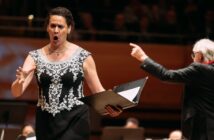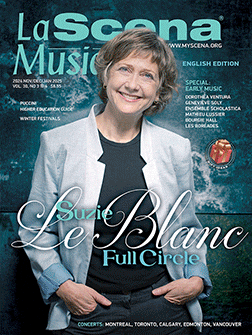Did you catch Herbert Blomstedt and Maria João Pires with the Berlin Philharmonic on Saturday? All it took was a smartphone, a subscription to the Berlin Philharmonic Digital Concert Hall and, optionally, a better-than-average pair of earbuds.
I did it the old-fashioned way and do not regret the decision. Hearing one of the world’s most famous orchestras led by one of the world’s most venerable conductors in one of the world’s most illustrious concert halls added up to one of the best concert experiences imaginable.
To risk another one-of qualification, the symphony on the program was one of my favorites, Brucker’s Third, in the formerly ignored but increasingly popular first version of 1873 that Bruckner dedicated to Wagner and adorned with some quotations (later excised) of the master.
To conduct this longer and more diffuse Third from memory would count as a achievement by any conductor. (I recall seeing Christian Thielemann, usually a memory man, flipping pages frantically during a 2009 Munich Philharmonic performance of the 1873 version because, as a musician explained to me afterwards, “he had another one in his head.”) Blomstedt is 90, which in his case seems to mean simply that he has had the time to memorize everything he really loves.
What a vital figure this American-born Swedish maestro is on the podium. He conducts seated now, but is so tall and has such a wingspan that nothing in authority is lost. Possibly something is gained in his freedom to turn and sway his upper body in sympathy with the music.
Here was a Bruckner 3/1 with everything: silvery strings, a noble trumpet at the start, telling details embedded in a grand landscape, joy overcoming doubt and despair. That joy could be correlated with Blomstedt’s tempos, which brought the symphony in at a modest 64 minutes. Yet the all-important pauses (starting with that frightening chasm on the opening page between the unison and harmonized brass) had the ring of psychological truth. Nothing sounded rushed.
Nor needlessly prolonged. Bruckner’s finales are not easy to manage. By treating the starkly contrasting themes with go-ahead vigour, Blomstedt assured the coherence of the whole. Recollections of earlier movements (not the only element of this score inspired by Beethoven’s Ninth) were brought impressively into focus and the concluding minutes were magnificent.
As for the notorious Wagnerisms, these seemed natural and dignified parts of the fabric.
While the lustrous Berlin Philharmonic was obviously part of the equation, Blomstedt was in charge, cuing entries and crafting arches with no baton. It took nothing more than a right index finger to bring the first movement to a majestic conclusion. The flow from quiet to very quiet in the opening measures of the Adagio was masterly, and you could not ask for more rustic charm in the Trio of the Scherzo.
A Mozart piano concerto often serves as a Bruckner starter. K. 488 in A Major worked nicely with Pires, a soloist of glowing tone and thoughtful demeanor. There was much soul-searching in the opening of the Adagio. Sticklers for clarity might have found fault with the elided string phrasing of the first movement. I was content to bask in the sound. First and second violins were split. This configuration is becoming the rule rather than the exception.
All this happened in the Großer Saal of the Philharmonie, a wraparound pentagonal construction of 1963 that has aged beautifully and sounds as fine as its 21st-century descendants. Which might be simply to say that it faithfully reflects its inhabitants.
https://www.berliner-philharmoniker.de/en/














